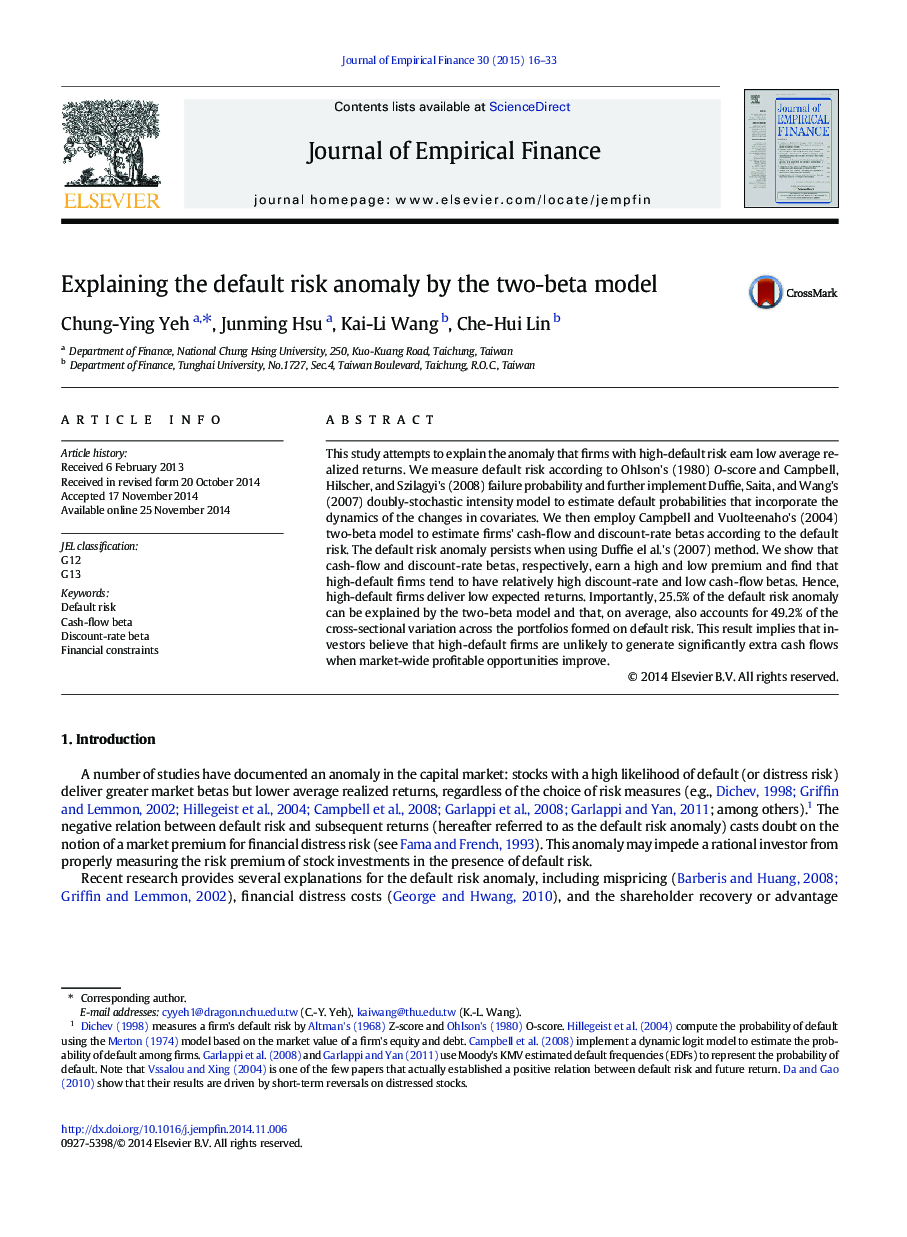| Article ID | Journal | Published Year | Pages | File Type |
|---|---|---|---|---|
| 958736 | Journal of Empirical Finance | 2015 | 18 Pages |
•We re-examine the default anomaly based on DSW, CHS, and O-score measures.•We find that stocks with higher default risk earn low average returns.•We explain this anomaly by using the Campbell et al (2004) two-beta model.•High default risk stocks have high discount-rate betas and low cash-flow betas.•25.5% of the default risk anomaly is explained by the two-beta model.
This study attempts to explain the anomaly that firms with high-default risk earn low average realized returns. We measure default risk according to Ohlson's (1980) O-score and Campbell, Hilscher, and Szilagyi's (2008) failure probability and further implement Duffie, Saita, and Wang's (2007) doubly-stochastic intensity model to estimate default probabilities that incorporate the dynamics of the changes in covariates. We then employ Campbell and Vuolteenaho's (2004) two-beta model to estimate firms' cash-flow and discount-rate betas according to the default risk. The default risk anomaly persists when using Duffie el al.'s (2007) method. We show that cash-flow and discount-rate betas, respectively, earn a high and low premium and find that high-default firms tend to have relatively high discount-rate and low cash-flow betas. Hence, high-default firms deliver low expected returns. Importantly, 25.5% of the default risk anomaly can be explained by the two-beta model and that, on average, also accounts for 49.2% of the cross-sectional variation across the portfolios formed on default risk. This result implies that investors believe that high-default firms are unlikely to generate significantly extra cash flows when market-wide profitable opportunities improve.
